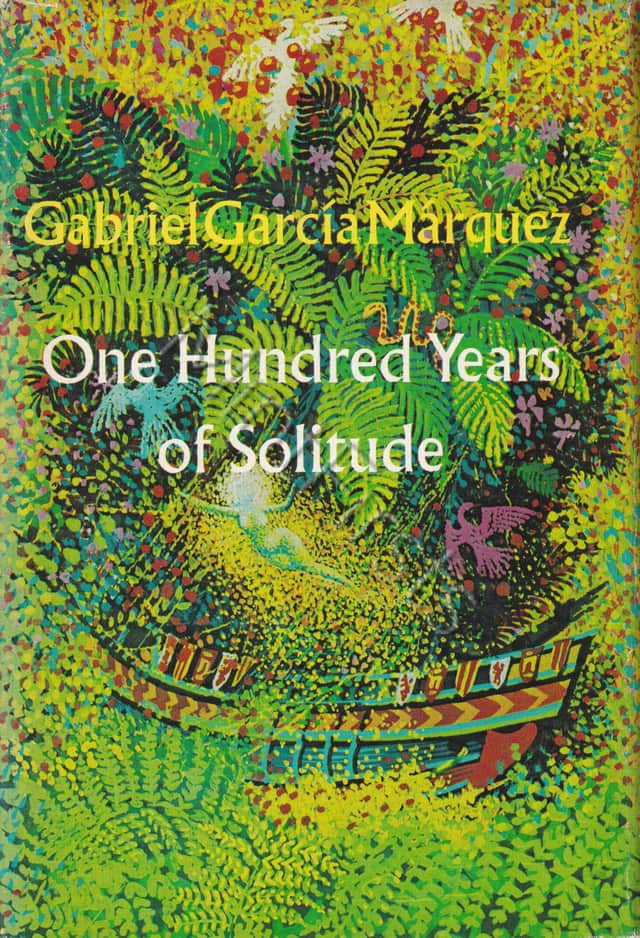Established
2004
Relaunched
2024
Our booksHow we tradeAbout usCredits & thanksYour account
- Home page
- Our books
- How we trade
- About us
- Credits & thanks
- Your account
- Your cart
MENU
One Hundred Years of Solitude
First edition in English of García Márquez's One Hundred Years of Solitude

Gabriel García Márquez; translated by Gregory Rabassa
First edition in English. 8vo. Pp. [viii], 422, [2 (last blank)]. Dark green cloth, lettered in gilt to spine with publisher's device to upper board, fore-edge untrimmed, olive green end papers; variant with yellow and green headbands (no priority established). Jacket design by Guy Fleming. One of 7,500 copies, with "first edition" stated to copyright page and no number line to p. 422. Second-state jacket priced "$7.95" (with a period instead of an exclamation mark to the end of the first paragraph on the front flap).
Translated from the Spanish by Gregory Rabassa, on the advice of Julio Cortázar. García Márquez claimed that "he liked the English version better than his own original Spanish one" (Rabassa, 2005, p. 96), with Rabassa nowadays being "accorded nearly a co-creative status with the original author" (Guzmán, 2010, p. 14). Originally published in 1967 by Editorial Sudamericana, Buenos Aires, as Cien años de soledad.
Faint flecking to top edge, closed tears to dustjacket folds and edges with a degree of discolouration to spine, else Fine.
The defining text of "magic realism." The novel chronicles the rise and fall of the mythical town of Macondo, based in part on García Márquez's hometown of Aracataca, through seven generations of its founding family, the Buendías. Awarded the 1982 Nobel Prize in Literature. Voted by the The New York Times Book Review as the best book of the 1970s and the one most likely to endure one hundred years from now.
[Klein E2.a.1; Guzmán, M. C. (2010). Gregory Rabassa's Latin American Literature: A Translator's Visible Legacy. United Kingdom: Bucknell University Press; Rabassa, G. (2005). If This be Treason: Translation and its Discontents. A Memoir. New York: New Directions]
edition
first in English
format
hardback
publisher
Harper & Row, Publishers
published in
New York and Evanston
publication year
1970
ISBN
not assigned
height × width
22 × 15.5 cm
genre
literary fiction
language
English
binding style
cloth
binding state
original binding
condition . . .
near fine
of jacket
near fine
GBP£ 900
EUR€ 1,030
USD$ 1,190
ref.78Y 9U7